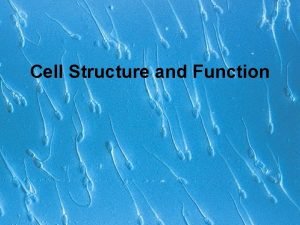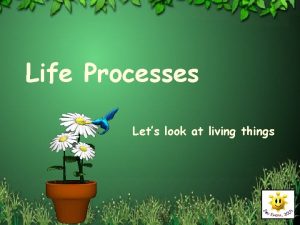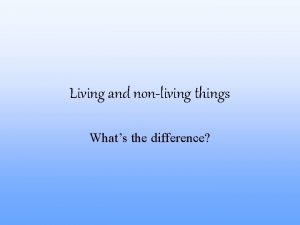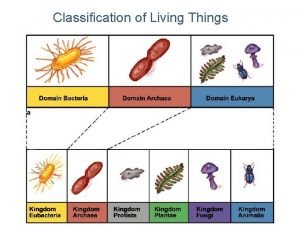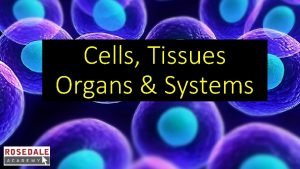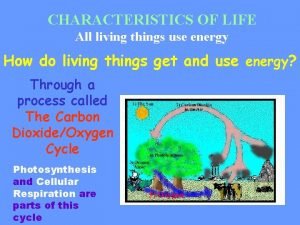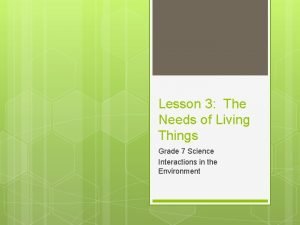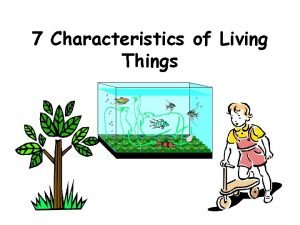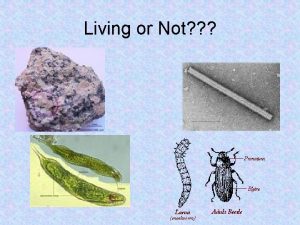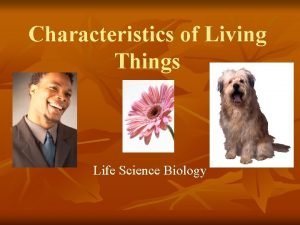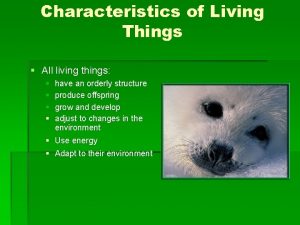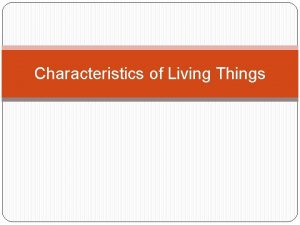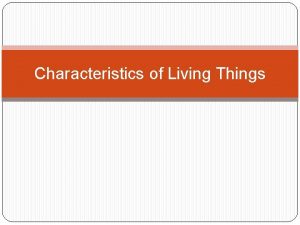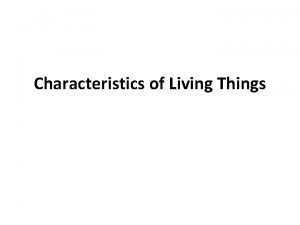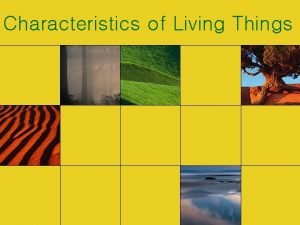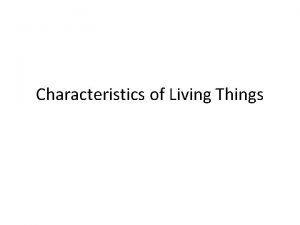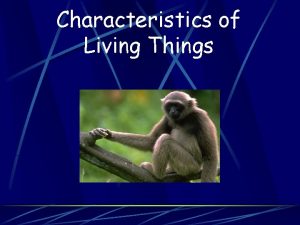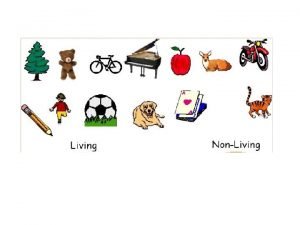Characteristics of Living Things All living things have













- Slides: 13

Characteristics of Living Things

All living things have 6 things in common: They are made of cells They obtain and use energy They grow and develop They reproduce They respond to their surroundings They adapt to their environment

What are some things that are living: Birds Bacteria Plants Fungi

Once Living/Dead Once alive, but now physically inactive (no movement, response, reproduction, metabolism, growth) Still in it’s natural state Ex: Fallen Tree branch dried flower dead squirrel

What are some things that are non-living? Rocks Wooden table Plastic Rubber

1. Made of Cells Unicellular - one cell Ex: bacteria Multicellular - many cells Ex: cats

2. Obtain & Use Energy Autotrophs - make their own food Ex: all plants Heterotrophs - must find and eat food Ex: cows, birds, lizards

3. Grow & Develop Get larger Get more complex

4. Reproduce (with DNA) Asexual - one parent, offspring are identical copies Sexual - two parents, involves egg and sperm

5. Respond to Surroundings (movement) Stimulus - change in organism’s environment that causes organism to react (like a school bell) Response - an action or change in behavior as a result of stimulus (students move to their next class)

6. Adapt to Environment A physical or behavioral change to help the organism survive

What about Viruses? A virus is a sub-microscopic infectious agent. It can reproduce, but only in a host cell Does not have cells Evolves through natural selection

CEG, RRA Cedric Eats Grass Ron Races Animals
 Smallest living unit of life
Smallest living unit of life Sensitivity in life processes
Sensitivity in life processes Venn diagram of living and non living things
Venn diagram of living and non living things Why do we classify living things
Why do we classify living things Cell to tissue to organ to organ system to organism
Cell to tissue to organ to organ system to organism Life cycle of all living things
Life cycle of all living things What are the 5 basic needs of all living things
What are the 5 basic needs of all living things Different types of living organisms
Different types of living organisms Throwaway living
Throwaway living Which part of the plant carries and protects the seed
Which part of the plant carries and protects the seed 7 characteristics of life
7 characteristics of life 6 characteristics of living things
6 characteristics of living things Movement characteristics of living things
Movement characteristics of living things Six characteristics of living things
Six characteristics of living things
